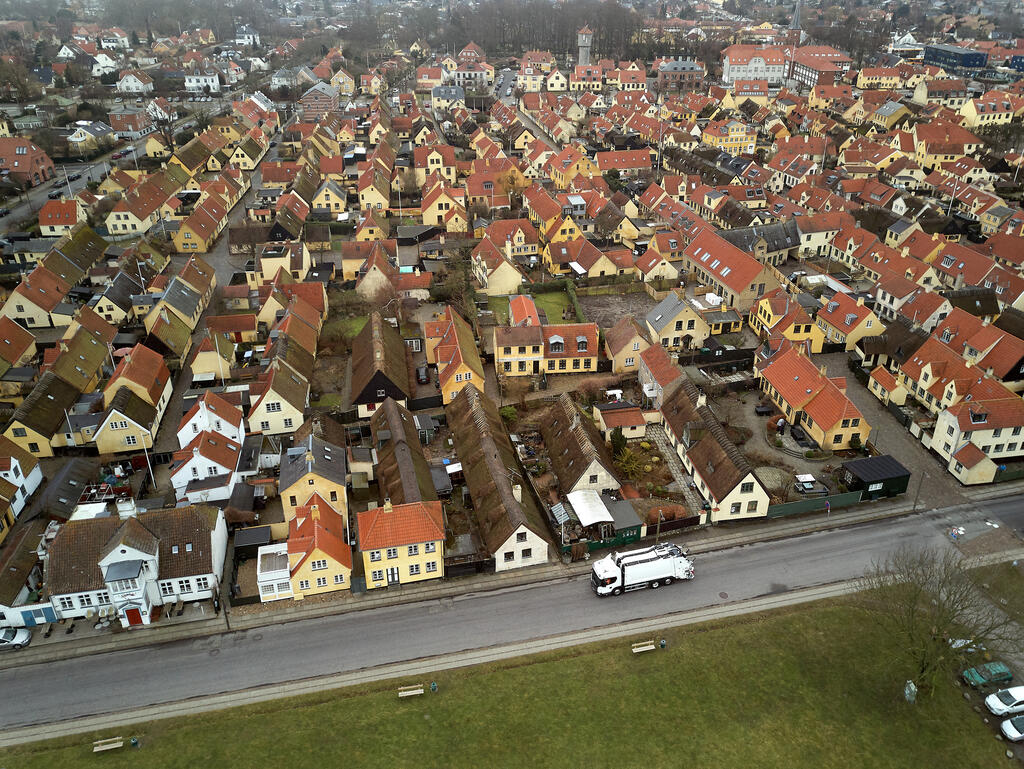Finding solutions for traffic congestion in cities
As cities grow, the demand for transport, the size of the population and the city's impact on the environment all increase. Against this background, businesses and research institutions are working together on a new research project (HITS) to find sustainable solutions to these problems, but the vehicles that we use today will not form part of the solution. All city residents want to have goods delivered and waste removed, but they do not want the transport of goods and waste to intrude on their lives or cost money. The project is led by Scania and partially funded by Vinnova.

HITS is a cooperative initiative across a number of different industries that aims to develop efficient transport solutions and create cleaner and safer cities. The participants include property owners, city authorities, municipalities, engineering and logistics companies and research institutions. The project is coordinated and supported by CLOSER.
"The project focuses on areas relating to urban transport where the existing solutions are part of the problem. The number of vehicles is growing, fewer drivers are available and the amount of congestion and waste is increasing. We need to find smart solutions for managing transport data, legislation and infrastructures, so that we can overcome these challenges and, at the same time, achieve our global sustainability targets," says Jonas Hofstedt, Senior Vice President of Scania.
Studies have shown that residents of large cities each produce around 45 kilos of waste every day. This means that a huge quantity of waste has to be removed. At the same time, the number of parcels being delivered is growing as a result of online shopping. The number of vehicles that transport waste and goods is also increasing and they are often empty on their return journeys.
"How can we make better use of load capacities and reduce the number of vehicles?" asks Jonas Hofstedt.
Hubs could be one solution
One area that the project will be looking more closely at, together with property owners, is the use of
logistics centres or hubs, which offer significant potential for making cities safer and cleaner. They can provide services such as the transshipment of goods, autonomous warehouse solutions and electrified vehicles controlled by real-time data, which dock and undock from one another depending on the next destination.
One key success factor for HITS is to focus on the needs of users and transport buyers. This is why business models and building trust between the players in the transport and logistics chain are both such important considerations. The issues involved are complex and the project participants will need to adopt new approaches and work in partnership to ensure that they do not get stuck in their current ways of thinking.
Would you like to find out more about HITS?
Elisabeth Hörnfeldt
Project leader, Scania
elisabeth.hornfeldt@scania.com
- Scania: Project leader Elisabeth Hörnfeldt
- CLOSER: Responsible for developing and operating innovation arenas and coordinating partnerships: Lovisa Westblom
- KTH: Main research partner. Responsible for developing knowledge: Anna Pernestål
- City of Stockholm (Traffic Administration Office): Robin Billsjö
- Upphandling Södertörn: Olof Bohlin
- LogTrade: Internet of Logistics and IT solutions. Contact: Minna Sandberg
- HAVI: Logistics company and end consumer: Camilla Eklöf
- Ragn-Sells AB: Return flow from recycling systems. Contact: Erik Wastesson
- Catena AB: Community and urban development: Benny Thögersen
- Fabege AB: Community and urban development: Anders Borggren
- Dagab: Logistics company and end consumer: Daniel Benett
- FTL: Logistics company and end consumer: Martin Svedin
- IVL – Swedish Environmental Research Institute: Sönke Behrends
- RISE (Research Institutes of Sweden AB): Analysing the impact of regulations: Kristina Anderson
- Ericsson: Jan Höller
- Linköping University: Professor Maria Huge-Brodin
- University of Gothenburg: Contact: Professor Michael Browne

